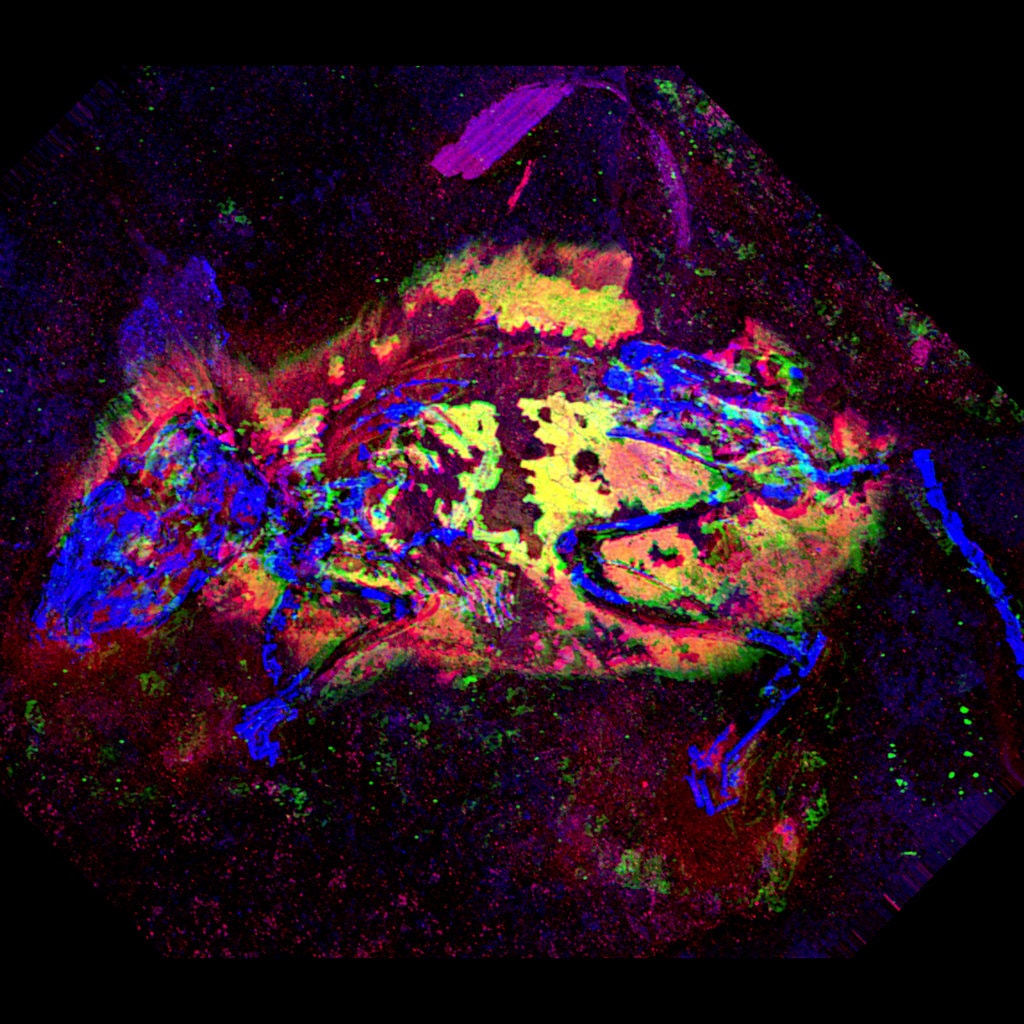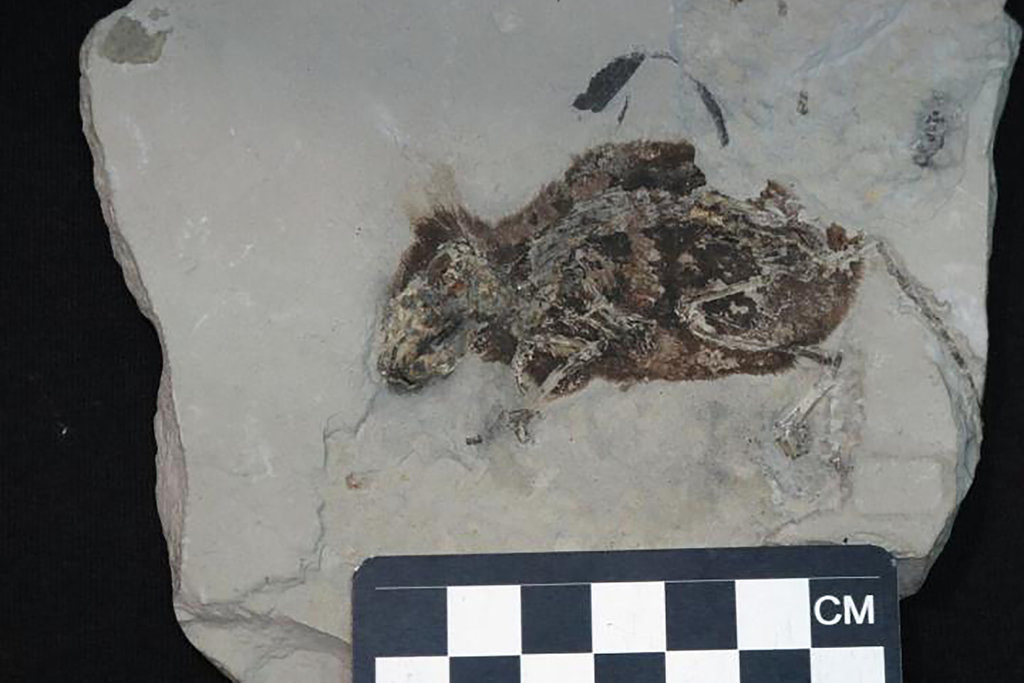@WFS,World Fossil Society,Riffin T Sajeev,Russel T Sajeev

A false color synchrotron X-ray image of a fossilized mouse. The yellow regions are rich in zinc and sulfur, suggesting the mouse’s fur had red pigments.Credit: Nature Communications
What color was T. Rex? What about triceratops or glyptodon? Until recently, the palette of prehistory was the sole provenance of daydreams, CGI artists or kids with crayons.
Advances in imaging technology are bringing us closer to real answers. Over the past decade, we’ve learned that Sinosauropteryx’s tail was striped, and Microraptor’s head was blue-black and shiny, like a crow’s.
A paper published Tuesday in Nature Communications adds to the paint box. In it, a team of researchers provide the first conclusive fossil evidence that an ancient creature contained pheomelanin — the same pigment that gives a red hue to chicken feathers, tiger fur and your freckles. Their findings, and the method that led to them, will allow researchers to search for more evidence of this coloring across the fossil record.
Even in well-preserved fossils, pigments deteriorate quickly. Researchers have a few workarounds to find clues to color. Some look for melanosomes, the organelles in animal cells that make and store pigments. The shape of a melanosome can indicate what type of pigment was once inside, while the organization of melanosomes within a feather can suggest whether a bird (or dinosaur) was dull or iridescent.
Another technique is to look for more persistent molecules known to be associated with pigments. That’s the preferred tactic of this research group, which previously found evidence of eumelanin — a brown and black pigment — in the plumage of the feathered dinosaur Archaeopteryx.

The 3 million-year-old fossil found in Germany of an extinct species of field mouse. Credit: University of Gottingen
For this new study, the researchers worked with two specimens of an extinct field mouse, Apodemus atavus. Three million years ago, several of these mice died, and were washed into a pond in what is now Willershausen, Germany. Quickly buried by sediment, they were spared many of the ravages of bacteria and time, and ended up in a fossil drawer at the Geoscientific Museum at the University of Göttingen.
Phillip Manning spotted them in the museum’s collection a few years back.
“I saw the exceptional preservation of fur,” said Dr. Manning, a geologist at the University of Manchester and the paper’s lead author. “I realized, ‘Bloody hell, these are going to be worth scanning!’”
The mice were sent to the SLAC National Accelerator Laboratory in California, where they were run through a special X-ray that revealed their chemical structure. The X-ray works at a fine enough scale to detect “a little bit of sulfur, or a little bit of zinc or copper,” said Uwe Bergmann of Stanford. “We can get maps of different elements very fast.” (Dr. Bergmann originally came up with this technique in the early 2000s, to reveal ink on erased and occluded pages of the Archimedes Palimpsest.)
Next, the team used spectroscopy to zoom in on two key elements: zinc and sulfur. In mammals and birds living today, pheomelanin is closely associated with particular zinc-sulfur compounds. The researchers saw these in the fossils as well, meaning their fur had been filled with the reddish pigment. They found a higher concentration of them on the dorsal side, suggesting the mouse had a lighter-colored belly.
“By understanding that delicate relationship between zinc and sulfur, for the first time, we can confidently say, ‘Yes, this is pheomelanin pigment in the fossil record,’” Dr. Manning said.
More important than their conclusion about the mouse’s color is what their process makes possible. Previous approaches to detecting color were piecemeal or destructive. But “this new method appears to allow mapping of color-giving pigments across a whole fossil,” without chipping any of it away, said Mike Benton, a paleontologist at the University of Bristol who was not involved in the study.
The group is working on further streamlining the scanning method, “so that it’s easy for anyone to come and bring in fossils,” Dr. Bergmann said.
Source: Article by By Cara Giaimo, the New York Times.
@WFS,World Fossil Society,Riffin T Sajeev,Russel T Sajeev



 May 26th, 2019
May 26th, 2019  Riffin
Riffin  Posted in
Posted in  Tags:
Tags: 